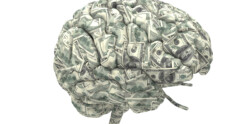“An ounce of data is worth a thousand pounds of opinion.”
Dr. Ashish Jha, M.D., MPH, an accomplished public health expert, and medical doctor, lives by those words, which have a particularly powerful resonance as we grapple with the COVID-19 pandemic and its economic fallout.
This unprecedented public health crisis has upended our daily lives and threatens our economic health. The situation is made worse by the widespread disagreement about how we should respond to this crippling pandemic. What we all need right now is an informed solution and roadmap for moving forward.
I recently spoke with Dr. Jha for a Money Matters podcast special. He’s a professor of Global Health at the Harvard T.H. Chan School of Public Health and Faculty Director of the Harvard Global Health Institute. Dr. Jha’s research focuses on the social and economic impact of health policies. He offered compelling information and a connect-the-dots approach to how we, as a country, can begin to recover physically and economically.
Before we can reopen America, Dr. Jha believes we need to meet the following criteria:
1. The state needs to be at a point where there’s a declining infection rate.
2. To complete step number one, we first have to implement extensive testing. We’re currently running 100,000 tests every day, but we need to get to a place where we’re completing 200,000 to 300,000 tests a day.
3. The two above steps are essential, but we also need to have an action plan for both the healthy and the sick. Folks need to feel confident that if they get sick that there’s a plan for how they can get better without infecting others.
Declining Infection Rate
According to Dr. Jha, we must see a declining infection rate.
How do we measure this value? Scientifically, we can determine an area’s infection rate and watch for it to drop. There are a variety of variables that go into the calculation. At present, the critical data point is a place’s population composition, including whether there are large numbers of at-risk individuals.
Right now, every person who has the coronavirus will spread it to three other people. That may not seem like a big deal, but think about the math – one person spreads the virus to three, those three spread it to nine, those nine spread it to twenty-seven, and so on. We desperately need to get this number down.
And we know we can, based on what other countries have accomplished. China and South Korea have both reduced their spread numbers (referred to as R0, the basic reproduction number of a virus) to below one.
Dr. Jha is hopeful that with social distancing and self-quarantine, we can slow the spread of COVID-19 and get back to work and school sooner rather than later.
He’s also optimistic that we will quickly see a COVID-19 treatment and vaccine come into the picture. Dr. Jha notes that, while the treatment won’t stop the spread of the virus, it will reduce the severity of the infection.
“I am hopeful that some of these trial therapies will work,” says Dr. Jha “They will relieve the health care system. They will hopefully reduce the mortalities. They will hopefully help the disease become less scary to us. There’s so much being done something is going to work.”
Massive Testing
In the next seven to 10 days, Dr. Jha believes that he’ll see testing on the necessary scale. We’ll get this way by tapping into unique resources. States, for example, may ramp-up testing by creating tests on their own in partnership with universities, medical centers, and private companies.
In Georgia, testing is gearing up, but Dr. Jha feels like it’s still half of what it should be. He believes we’ll hit our testing sweet spot in seven to ten days.
Dr. Jha is adamant that we need two or so weeks of a shutdown to let the testing catch up with the real infection rate. According to Jha, the virus is hard to keep up with unless people are truly isolated. That means doing social distancing and quarantine in tandem, with only places like grocery stores and hospitals remaining open. With this approach comes a tremendous economic cost, but it far outweighs the second option, says Dr. Jha.
That second path is to forego a lockdown and simply wait. Doing so, says Dr. Jha, would eventually lead to a flood of COVID cases that could overwhelm hospitals. Then, your lockdown will have to last twice as long before things get back under control.
Dr. Jha believes that we’ll get to a place nationally of enough testing within the next two to three weeks. But the key to getting reliable data is to look at who you’re testing. He says we need to test people with symptoms, along with people who have been in contact with infected individuals through contact tracing, and a smattering of other people, too.
Right now, according to Dr. Jah, the COVID mortality rate is about 10 to 15 times that of the flu. But again, it’s hard to tell without extensive testing.
A public-private partnership would be one way forward. If we take a cue from South Korea and offer drive-thru testing at drugstores, we could collect the amount of data we desperately need
Action Plan
Americans are wired to fight things head-on versus cowering in a corner. And it will be no different with COVID-19. The fight just looks different – shutdowns, widespread testing, social distancing, and self-quarantining.
Dr. Jha says different states will take different paths, even though the virus crosses state lines easily.
In Georgia, we currently have a cobbled-together approach of social distancing and quarantine. Just last Monday, Atlanta Mayor Keisha Lance Bottoms issued a stay at home order, but as of yet, we don’t have a statewide shutdown. Dr. Jha thinks we need a three- to four-week national closure and quarantine.
Cities and states that aren’t aggressive, says Dr. Jha, are putting their residents, communities and economies at an increased risk of sickness and other harm.
“Let the data drive the decision, let the evidence tell you when it’s safe to open because if you open too soon, the virus doesn’t care about dates, the virus will trounce you,” he says.
Every local hospital system needs a backstop in dealing with a potential flood of COVID-19 cases. Dr. Jha recommends using hotels.
In my opinion, that approach would hit multiple birds with one stone. Converting hotels to temporary hospitals would help people who have the virus, boost the flailing hotel industry and put money into restaurants’ pockets from food delivery.
Dr. Jha says we should all stay home for a few weeks. This commitment would make testing easier. Then, once the virus slows down, people can go back to work and their kids can go back to school. All the while, we would keep up the testing.
The better we do at social distancing, the better we do with our testing, the better we help those who are sick, the sooner we get can all get back online from both a health and economic perspective.
During these scary times, it’s more important than ever to listen to our public health experts. They, too, want to get the economy back up and running, and they have the strategies to help us do so.
Right now, the economy won’t get back on track until we get back on track. That’s why we would benefit greatly from implementing Dr. Jha’s three-prong approach to getting America well again.
We need to know our infection rate, the spread, and the trajectory of where we may be headed. If the data become low enough, we could reopen our economy and continue with the extensive testing and contact tracing to stamp out the virus. Communities can reopen and remain open so long we commit. “You have to have excellent data and a commitment to long-term testing,” says Jha.
America has made tremendous progress and will continue to advance over the coming days and weeks. We will continue to face down this threat and will eventually overcome COVID-19. It’s in our American DNA.
Click here to listen to the full interview.
This information is provided to you as a resource for educational purposes only and should not be considered investment advice or recommendation or an endorsement of any particular security. Investing involves risk, including the possible loss of principal. There is no guarantee offered that investment return, yield, or performance will be achieved. There will be periods of performance fluctuations, including periods of negative returns. Past performance is not indicative of future results when considering any investment vehicle. The mention of any specific security should not be inferred as having been successful or responsible for any client achieving their investment goals. Additionally, the mention of any specific security is not to infer investment success of the security or of any portfolio. Past performance is not indicative of future results. A reader may request a list of all recommendations made by Capital Investment Advisors within the immediately preceding period of one year upon written request to Capital Investment Advisors. It is not known whether any client holding the mentioned securities have achieved their investment goals or experienced appreciation of their portfolio. This information is being presented without consideration of the investment objectives, risk tolerance, or financial circumstances of any specific investor and might not be suitable for all investors. This information is not intended to, and should not, form a primary basis for any investment decision that you may make. Always consult your own legal, tax, or investment advisor before making any investment/tax/estate/financial planning considerations or decisions.














